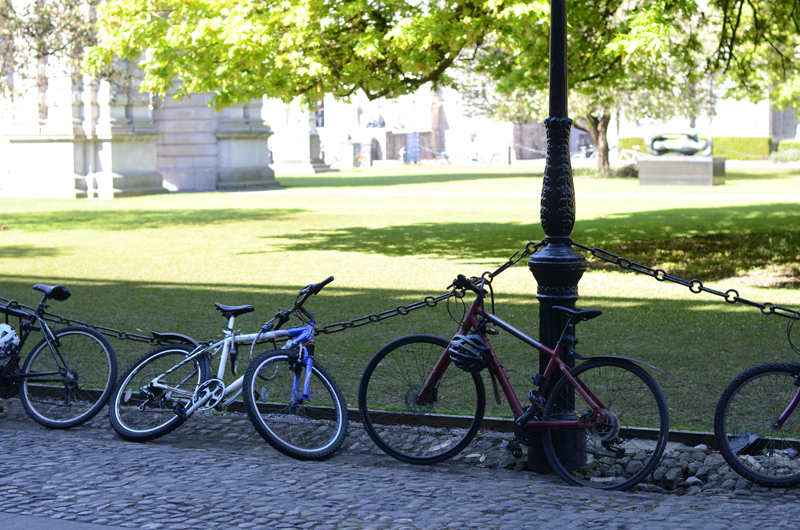In a press released today, Trinity announced that they have asked Dublin City Council to widen footpaths and install bicycle lanes on more than 8 km of key routes between its campuses and residences to enable its students and staff to walk and cycle in and out of College as the city reopens after the COVID-19 lockdown.
These routes include tracks from College grounds to Trinity Hall in Dartry, Trinity to the Grand Canal Innovation District, Nassau Street and Trinity to St. James’s Hospital.
With 17,000 students and 4,000 staff, Trinity is the largest travel and trip attractor in the city centre.
College is urging students and staff who commute within 5 kilometres of campus to walk or cycle if they can, to free up public transport for those who need it for health reasons, or because they commute longer distances.
Provost Patrick Prendergast said: “We are acutely aware that when the city reopens, our community needs to plan how to travel under social distancing requirements.
“We are asking those who live within 5 km of the campus to walk or cycle if possible,” he added. “We hope that if people are enabled to do so, they will.”
To allow students and staff to commute to campus by foot or bicycle, College has asked Dublin City Council to introduce measures on four routes in the city that have been identified since 2018 as a priority for Trinity.
These measures include widening footpaths, installing bike lanes or increasing the width of those that are too narrow, prioritising walking and cycling at junctions and reducing speed limits on roads.
College claimed that these measures will align with changes planned in the “Enabling the City to Return to Work” programme published in May 2020 by Dublin City Council and the National Transport Authority.
Prof. Brian Caulfield, Associate Professor in Civil Engineering at Trinity College Dublin, said: “The plans outlined by the City Council and the National Transport Authority will result in a dramatic change in the environment pedestrians and cyclists will encounter when moving throughout the city.”
He continued: “For people on bikes in particular, the combination of more protected infrastructure and an increase in cycling numbers will foster safety in numbers and encourage more people to try cycling.”
Trinity has been promoting walking and cycling into College prior to COVID-19 and ran a city-wide consultation on changes needed to the four routes to make them more liveable in November 2019.
Trinity’s latest travel survey (2019) indicated that the vast majority of students and staff commute to campus by public transport (58%) or by walking/cycling (41%), with only 1% using private cars.
It also found that 80% of Trinity’s community travels 10km or less to campus. Of those who stated they currently do not travel by their preferred mode, the largest group indicated that they would change to safe, segregated cycling if it were available.
In 2018, 91% of Trinity’s community said they supported the idea of installing segregated cycling or quiet ways to increase cycling safety.
College plans to survey the college community to find out how travel patterns have changed and how staff and students would like to travel as our city reopens.






